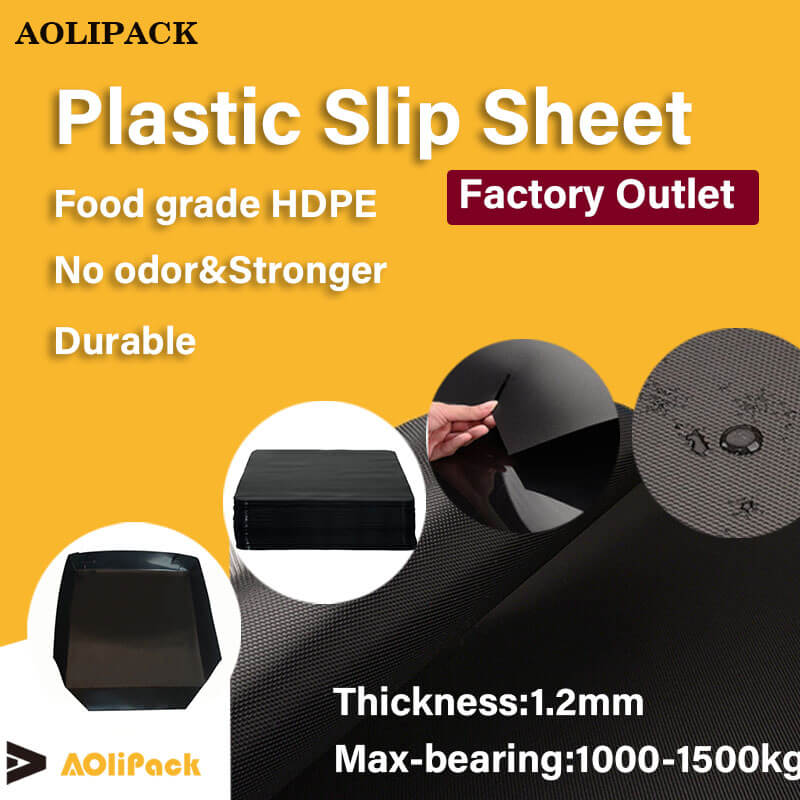what is a slipsheet
introduction to Slipsheets
A slipsheet is an ultra-thin, rigid platform that serves as a modern alternative to traditional pallets in material handling and logistics. Typically measuring just 0.5-3mm thick, these flat sheets are revolutionizing how goods are stored, transported, and handled across global supply chains.
Key Characteristics of Slipsheets
Physical Properties
Thickness: 0.5-3mm (compared to 100-150mm for standard pallets)
Materials: Corrugated fiberboard, plastic (HDPE), or laminated composites
Standard Sizes: 48" x 40" (most common), 48" x 48", or custom dimensions
Weight Capacity: 1,500-3,000kg depending on material
Design Features
Lip/Tab Extensions: For forklift attachment (single or multiple lips)
Surface Texture: Non-slip coatings for load stability
Edge Reinforcement: For durability during handling
How Slipsheets Work in Logistics
Basic Handling Process
Load Preparation: Products are stacked directly on the slipsheet
Securement: Load is stabilized with stretch wrap or strapping
Forklift Operation:
Special push-pull attachment engages the lip
Entire load is pulled onto forklift platform
Transport/Storage: Moves like palletized goods but without the pallet
Required Equipment
Forklift Attachments: Push-pull or clamp mechanisms (
5
,
000
−
5,000−8,000 per unit)
Optional: Stretch wrap machines, weighing systems
Why Use Slipsheets? Key Advantages
Space Efficiency
Saves 4-6 inches per load height
Enables 15-20% more product per truck/container
Ideal for high-density automated storage systems
Cost Savings
90% cheaper than wooden pallets per unit
Eliminates pallet retrieval costs
Reduces freight expenses through weight savings
Sustainability Benefits
75% lower carbon footprint than wood pallets
Fully recyclable materials

No ISPM-15 fumigation requirements for international shipping
Operational Improvements
Faster loading/unloading cycles
Reduced product damage
Better automation compatibility
Common Applications
Industry Uses
Retail/E-commerce: Amazon fulfillment centers
Food/Pharma: Hygienic plastic slipsheets
Automotive: Heavy-duty laminated versions
International Shipping: Ocean container optimization
Typical Load Types
Boxed consumer goods
Bagged materials
Flat-packed items
Bulk containers
Slipsheets vs. Pallets: Direct Comparison
Feature Slipsheets Traditional Pallets
Thickness 0.5-3mm 100-150mm
Weight 0.5-3kg 15-25kg
Cost
0.50
−
0.50−6.00
10
−
10−25
Space Savings 15-20% more cargo Standard
Equipment Needs Special forklift Standard forklift
Implementation Considerations
Transition Challenges
Equipment Requirements: Forklift attachments needed
Training Needs: 4-8 hours per operator
Load Configuration: Proper weight distribution essential
Adoption Roadmap
Pilot Phase: Test with 5-10% of shipments
Cost Analysis: Measure space/cost savings
Full Rollout: Gradual implementation
Future of Slipsheet Technology
Emerging Innovations
Smart Slipsheets: Embedded RFID/IoT sensors
Self-Locking Designs: Eliminate need for stretch wrap
Advanced Materials: Biodegradable composites
Automation Integration: Robotic handling systems
Conclusion: The Slipsheet Advantage
Slipsheets represent more than just a pallet alternative—they offer a strategic logistics solution that addresses modern supply chain challenges. By adopting slipsheet technology, businesses can:
Reduce Costs: Through pallet elimination and freight savings
Maximize Space: Store and ship more product
Improve Sustainability: Lower environmental impact
Enhance Efficiency: Faster handling and automation readiness
With most operations achieving ROI within 12-18 months, slipsheets present a compelling value proposition for any business looking to optimize its material handling processes. As logistics continues evolving toward greater efficiency and sustainability, slipsheet adoption is poised to grow significantly across industries.







 wechat consulting
wechat consulting